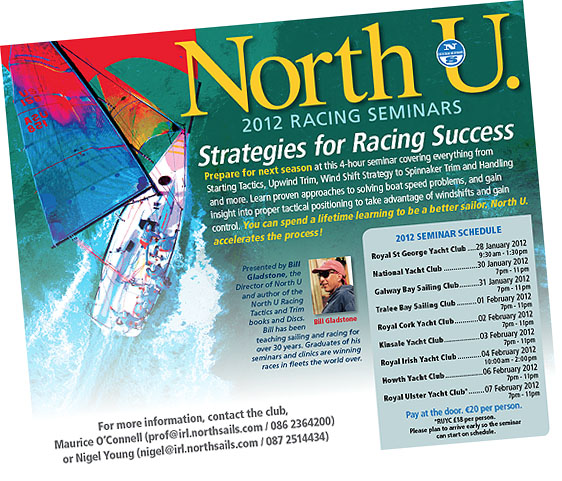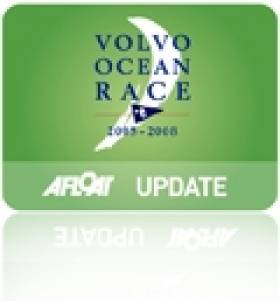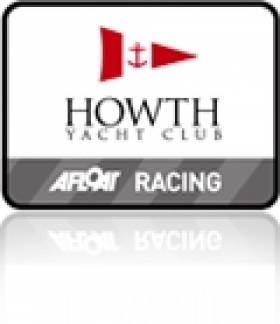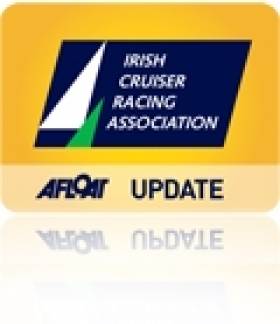Displaying items by tag: north sails
North Sails Opens State-of-the-Art Manufacturing Sail Loft in Gosport, UK
North Sails will today officially open their new UK sail loft based in the maritime South Coast hub, Gosport. The loft will incorporate many global departments under one roof: North Sails 3Di and Superyacht finishing, One Design sail production and Certified Service. It is the first loft of its kind to specialise in superyacht sails and boasts the largest raised finishing floor in the world at 1,950M2. Once again pushing the boundaries of sail technology, innovation, and manufacturing, this will be North Sails' European flagship facility.
The 110 meter long main loft floor is complemented by state-of-the-art equipment, all of which will assist production teams in producing and finishing sails faster and more efficiently than ever before. While continuing to design, manufacture and service current customers, the new space allows for work on special projects and custom finishing, especially larger projects.
Today in Gosport, President of North Sails Group, Ken Read, will join European COO John Welch as well as Peter Dubens, Managing Partner of Oakley Capital and Chairman of North Technology Group, as they open the doors to allow invited guests to see the revolutionary sail loft and what it means for sailors around the globe.
"Production has begun in all departments," said European COO John Welch. "North Sails Gosport is a response to the ever-increasing size and demand for superyacht sails, and represents a positive consolidation of our many departments. We are excited about the space we now have and the opportunity to serve our customers with greater speed and efficiency. North Sails' continued commitment to design and development is at the forefront, enabling us to keep pushing forward in all areas of sail manufacturing."
Divided into two manufacturing bays, the main finishing floor has been specifically designed for superyacht finishing. The 101x30M space allows for two J-Class headsails and a mainsail to be laid out at the same time. The floor has an overhead gantry with a 3.2 ton load capacity, five rotating sewing machines and two traveling sewing machines - where the machine moves atop a belt the length of the finishing floor, stitching the luff or leech without moving the sail. In a neighboring bay, Gosport houses three plotters and two separate raised floors for One Design and Certified Service.
"The Gosport manufacturing loft reflects North Sails' commitment to professional sailmaking and our ambition to remain on the cutting edge," said North Sails president Ken Read. "I'm excited for the opportunities ahead and would like to congratulate the local team for pulling it all together and creating something truly unique in the sailmaking world."
UK Sailor & Businessman Invests in North Sails Company
#northsails – North Technology Group (NTG) whose brands include North Sails has announced Oakley Capital Private Equity ("Oakley") has acquired a majority stake in their diverse family of companies. Oakley is an investment vehicle founded by UK businessman and sailing enthusiast Peter Dubens.
North Sails are represented in Ireland by Nigel Young of North Sails Ireland.
"We are delighted to be backing North Technology Group and an iconic brand like North Sails," said Dubens. "This investment further demonstrates Oakley's appetite to work with successful entrepreneurially led businesses. We are hugely excited by the potential of North Sails and look forward to working with the management team in the next stage of its evolution."
Originating with North Sails, founded by Lowell North in 1957, NTG comprises three market leading marine brands; North Sails; the world leader in sailmaking, Southern Spars; the world leader in composite spars, rigging and marine components and EdgeWater Boats; a line of high performance outboard sport boats, all focused on providing innovative, high performance products and solutions to the world's sailors and yachtsmen. Included in the family are North Thin Ply Technology (NTPT) and North Cutting Systems. Born from North's 3Di manufacturing of sails and used exclusively in Southern Spars' composite masts, NTPT has developed and commercialized a very light but strong carbon pre-preg solution, used by the aerospace market, competitive Formula 1 racing and high-end luxury products. North Cutting Systems is two businesses, the ground-breaking AlphaBlade Cutting System that provides a unique cutting solution for various industries, and the other produces the unique Automated Tape Laying (ATL) system. The intellectual property within the group is substantial and protected by an expansive portfolio of patents.
The largest company by revenues within NTG is North Sails, holding the patent for 3Di, a unique composite construction process that produces high-performance sails approaching the shape holding of a rigid foil. North 3Di is the sail of choice on the majority of America's Cup, Grand Prix, ocean race boats and Superyachts. The iconic brand also services cruising sailors with a wide range of performance 3D and paneled sails. North Sails is also the world's leading sailmaker for One Design classes, with more National Championships, World Championships and Olympic Class victories than all other sailmakers combined.
"I purchased North Sails from its founder, Lowell North, over 30 years ago," said Terry Kohler, owner of Windway Capital Corp, the previous majority shareholder in North Technology Group. "I am confident the new shareholder, Oakley, will continue Lowell's legacy to help launch North Sails and the NTG companies into their next stage of development. We are all extremely proud to have been growing our 'Engine Above the Deck' concept with North Sails and Southern Spars to become the undisputed market leader in sails and composite spars. North Sails has been on every America's Cup Challenger and Defender, was the sail supplier to every winning Volvo Ocean Race boat and our sails have been used by countless ocean, Grand Prix race winners and Olympic sailors. During my tenure, technology used from sailmaking lead to the development of North Thin Ply Technology and North Cutting Systems. In addition, we've built EdgeWater Boats into one of the top brands in the outboard industry. I wish Oakley and the North Sails management team future success as well as my pledge of commitment for continued support."
"North Sails has been the leader in sailmaking technology for over 20 years," said North Technology Group CEO, Tom Whidden. "Our team of industry experts build sails that allow sailors to maximize their performance on the water, whether they be extreme ocean racers or casual cruisers. North Sails looks forward to working with Oakley to grow our business and carry on the tradition of providing sailors with the highest performing products by being at the forefront of development. Terry Kohler has been a tremendously supportive shareholder for over 30 years and we are confident Oakley will be equally supportive in the years to come. Oakley shares our obsession with technology and enthusiasm for the sport of sailing. We're confident we are transitioning the business to a shareholder that will help North Sails reach the next level in sailmaking innovation."
The acquisition will further align North Sails with other NTG companies, specifically Southern Spars. Completing the transaction results in the ability to better share resources and technology between the two brands. "North Sails and Southern Spars have been working together for years on various projects from the America's Cup to the new J-70," said North Sails President Ken Read. "A well kept secret is North Sails Design Services, a combination of North Sails designers and proprietary computer programs, working together to answer questions traditionally identified during sea trials. I'm hopeful stronger synergy between North Sails and Southern Spars will result as we continue to provide the best products to all sailors. It's an exciting time for North Sails and for the sport of sailing."
Oakley's investment will assist the North Technology Group management team in growing and further developing all of its brands to ensure the Group remains at the forefront of technology for marine industry products and outside. The company will continue to be headquartered in Milford, Connecticut.
VOR Sail Wardrobe For New One Design Unveiled
#VOR - North Sails has revealed its sail wardrobe for the new one design VOR 65 with less than 18 months to go before the latest Volvo Ocean Race sets sail.
As The Daily Sail reports, the sails will be manufactured at North Sails' Nevada base using its 3Di process in a range of deniers, except for the A3 and storm jib.
Sails will be constructed in batches to ensure the same mould is used for eight sails of one type. The sails will then be finished at Vannes in France before being paired up with their respective vessels, assembly of which is racing ahead.
Perhaps most importantly, each team competing will have the use of just 12 sails - only eight of which will be allowed on board for each leg of the race. No recuts will be allowed except for repairs, in order to maintain the fairness of the one design principle.
“Our main objective is to make a really durable sail that holds its shape and stays together for as long as the race needs it to stay together," said North Sails general manager Jeff Neri.
The Daily Sail has more on the story HERE.
North Sails Ireland Start Nationwide Seminar Tour
#NORTH SAILS SEMINAR – US Sailmaker Bill Gladstone of North Sails returns to these shores for a nine stop lecture tour of Ireland starting this Saturday at the country's biggest club, the Royal St George YC in Dun Laoghaire. Gladstone was last here in 2009 and the series proved popular. From Dun Laoghaire the North Sails seminar heads West to Galway Bay. The full schedule is below.

Gladstone has been teaching sailing and racing for over 30 years. Topics this week, for the €20 pay at the door event, include starting tactics, upwind trim, wind shift Strategy to spinnaker trim and handling.
For more information, contact the club, Maurice O'Connell ([email protected] / 086 2364200) or Nigel Young ([email protected] / 087 2514434)
2012 SEMINAR SCHEDULE
Royal St George Yacht Club.....28 January 2012
9:30 am - 1:30 pm
National Yacht Club..................30 January 2012
7 pm - 11 pm
Galway Bay Sailing Club...........31 January 2012
7 pm - 11 pm
Tralee Bay Sailing Club...........01 February 2012
7pm - 11pm
Royal Cork Yacht Club.............02 February 2012
7pm - 11pm
Kinsale Yacht Club...................03 February 2012
7pm - 11pm
Royal Irish Yacht Club.............04 February 2012
10:00 am - 2:00 pm
Howth Yacht Club....................06 February 2012
7pm - 11pm
Royal Ulster Yacht Club*......... 07 February 2012
7pm - 11pm
Pay at the door. €20 per person. *RUYC £18 per person.
Turkey Shoot Attracts 65 Entries on Dublin Bay
With 65 boats on the line last Sunday for the opening race of the Viking Marine Turkey Shoot there's little doubt about the appeal of year round sailing on Dublin Bay. In spite of this week's high winds last Sunday's opening race saw quite a few no finishers due to lack of wind. Handicaps have been adjusted as per the local rules that apply to the series for Sunday's second race. Arwen now goes in the second start and Windshift goes in the fourth start. Race officer Fintan Cairns says "Some boats will be suffering from nose-bleeds this week with the meteoric rise in their handicaps". The series is made possible through the support of Dublin Bay Sailing Club and sponsors Viking Marine, McWilliam One Sails, North Sails & O'Brien Press.
Last weeks results, Race handicaps and start details attached for download below.
Joe English Lunch in Howth Yacht Club
Howth Yacht Club is staging a lunch to help Round the World skipper Joe English who has been diagnosed with Alzheimers disease according to a note on the club website.
Coming from a career in sailing that started in 1976 in North Sails' Kinsale loft, Joe is probably best known for his role as Skipper of NCB, the Irish maxi yacht which competed in the 1989 Volvo Ocean Race.
He also took over as Skipper of Toshiba in the 1997 race. More locally, Joe was an innovator in the Cork 1720 project in conjunction with Tony Castro.
In recent years, Joe has been diagnosed with Alzheimer disease at a very young age and recently featured in a Prime Time documentary on RTE on the subject. A charitable trust has been launched to help Joe and his family over the coming years and this year's HYC Christmas lunch is to benefit this worthy cause.
The lunch is on Friday, 10th December
Overnight Sail Repair Service for ICRAs
ICRA members sailing in Dun Laoghaire will be interested to know that North Sails Ireland have announced they are to run an overnight sail repair service during the Liebherr Cruiser Nationals. The service will be run out of the Stena Line ferry terminal in Dun Laoghaire.
Contact details for the North Sails Ireland are available on their website: www.northsails.ie


































































